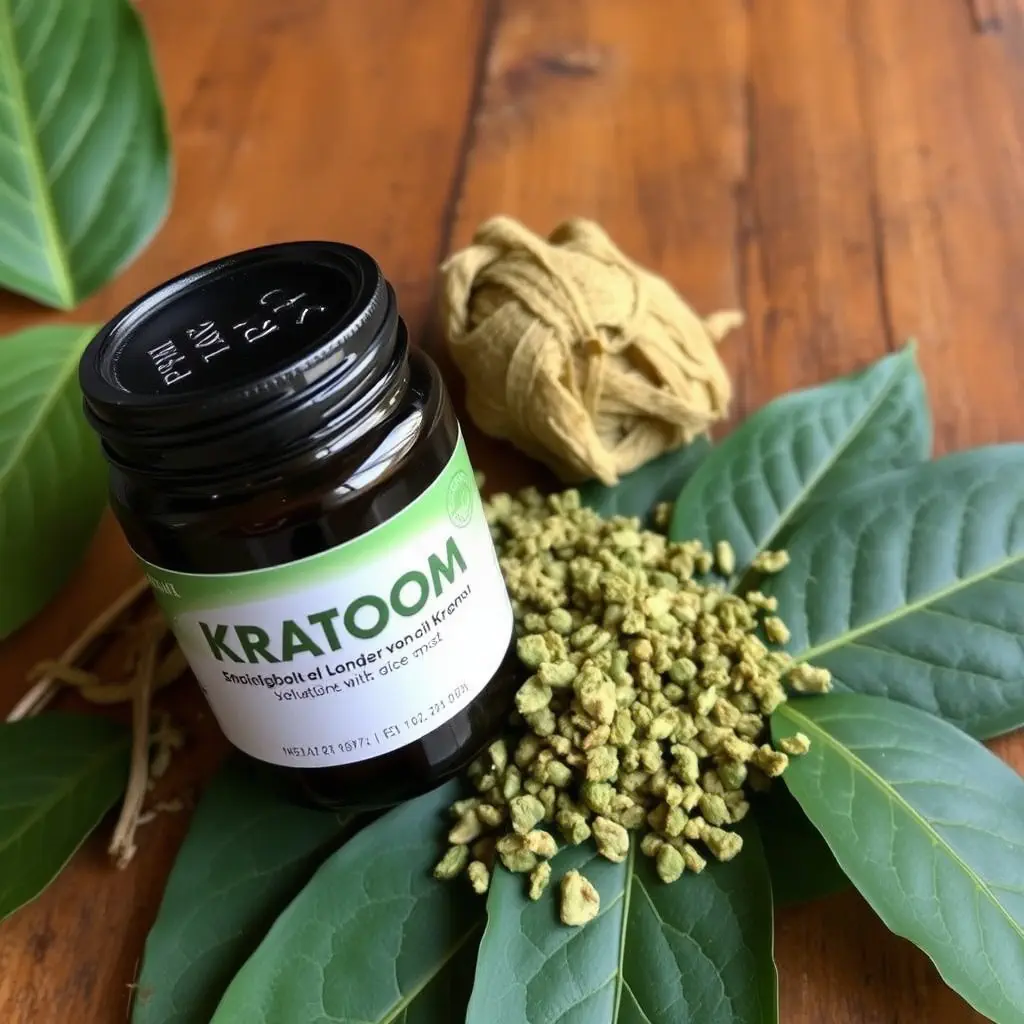Muscle soreness, particularly delayed onset muscle soreness (DOMS) from intense exercise or repetitive movements, is caused by microscopic damage to muscle fibers and can be addressed with the herbal supplement kratom. Derived from Mitragyna speciosa leaves, kratom's alkaloids may offer analgesic benefits by interacting with opioid receptors. When using kratom capsules for muscle soreness relief, it is crucial to start with a low dose, typically 1 to 5 grams, to assess individual sensitivity and effects. This approach allows for personalized pain management while avoiding adverse effects. It's important to adhere to the manufacturer's guidelines or seek advice from healthcare professionals regarding dosing. The legal status of kratom varies by jurisdiction, so it's necessary to verify its legality in your area. Kratom's potential for alleviating muscle pain is supported by some user experiences, but its efficacy and safety should be carefully considered alongside professional medical advice, with a focus on responsible use and understanding the appropriate dosage for effective relief.
Muscle soreness can be an unwelcome companion for both athletes and casual exercisers alike, often dampening physical performance and daily comfort. In this article, we explore the potential of kratom supplements as a natural remedy for muscle soreness relief, examining the science behind its active compounds and the strategic use of kratom capsules to alleviate discomfort. We will delve into understanding the nuances between delayed onset muscle soreness (DOMS) and acute soreness, and how kratom’s key alkaloids, mitragynine and 7-hydroxymitragynine, may interact with pain pathways to provide relief. Furthermore, we will discuss optimal dosing strategies, the importance of timing your intake, and how different strains can influence your experience. Additionally, we’ll cover complementary approaches that can enhance kratom’s effects, including integrating it with other natural remedies and adopting an exercise regimen conducive to muscle healing. Always mindful of safety, this article emphasizes the necessity of consulting a healthcare provider before incorporating kratom into your wellness routine to ensure its appropriate and responsible use for muscle soreness relief.
- Understanding Muscle Soreness and Kratom's Role for Relief
- – Defining muscle soreness: Delayed onset muscle soreness (DOMS) vs. acute soreness
Understanding Muscle Soreness and Kratom's Role for Relief

Muscle soreness can arise from various activities, including intense exercise, physical labor, or even from repetitive motions. The discomfort is often a result of microscopic muscle fiber damage and inflammation, which can be a natural response to the stress placed upon the muscles. This condition, commonly referred to as delayed onset muscle soreness (DOMS), typically manifests 24 to 72 hours post-exertion and can impede an individual’s ability to engage in subsequent physical activities. In the realm of natural supplementation, kratom has emerged as a potential aid for managing such discomfort. Kratom, derived from the leaves of Mitragyna speciosa, contains alkaloids that may interact with the body’s opioid receptors, offering analgesic effects. For those seeking relief through kratom capsules, understanding the appropriate dosage is crucial. Generally, the recommended starting dose for kratom capsules ranges from 1 to 5 grams, depending on the individual’s tolerance and the severity of soreness. However, it is imperative to approach any supplement with caution and to adhere to manufacturer guidelines or consult with a healthcare provider to determine how many kratom capsules to take for optimal muscle soreness relief without risking adverse effects. Users should also be mindful of the legal status of kratom in their jurisdiction before incorporating it into their wellness regimen, as its legality varies by location.

Muscle soreness can be a significant impediment to one’s daily activities and exercise regimen. Whether it results from intense physical exertion, such as weightlifting or running, or from everyday tasks, finding effective relief is crucial for maintaining an active lifestyle. Kratom, a supplement derived from the leaves of the Mitragyna speciosa tree, has gained attention for its potential benefits in managing muscle soreness. For those considering kratom as a remedy, understanding how many kratom capsules to take is imperative. The appropriate dosage can vary based on individual tolerance, body weight, and the specific strain of kratom being used. Generally, users start with a moderate dose, often one or two capsules, to assess their response before considering an increase. It’s important to consult with a healthcare provider before incorporating kratom into your wellness routine, as dosage and interaction with other medications can vary significantly from person to person. Additionally, kratom’s efficacy for muscle soreness relief may be influenced by the timing of intake in relation to the onset of muscle discomfort. Users have reported varying degrees of success, with some finding significant relief from the anti-inflammatory and analgesic properties attributed to kratom alkaloids like 7-hydroxymitragynine. However, individual experiences can differ, highlighting the importance of starting with a low dose and gradually adjusting as needed under professional guidance.
– Defining muscle soreness: Delayed onset muscle soreness (DOMS) vs. acute soreness

Muscle soreness is a common experience among individuals who engage in physical activities, particularly those that involve unfamiliar or intense movements. It manifests in two primary forms: delayed onset muscle soreness (DOMS) and acute soreness. DOMS typically presents itself within 24 to 72 hours post-exercise, characterized by aching muscles with stiffness and tenderness. This type of muscle soreness is often the result of microscopic damage to muscle fibers that occur during eccentric contractions or when lifting heavier weights than usual. Acute soreness, on the other hand, appears immediately after an exercise session and is generally less severe but more related to joints and connective tissues.
Kratom, a supplement derived from the leaves of Mitragyna speciosa, has been explored for its potential role in alleviating muscle soreness. The active compounds found in kratom, such as mitragynine and 7-hydroxymitragynine, are thought to interact with opioid receptors in the brain, which may help modulate pain perception. When considering how many kratom capsules to take for muscle soreness relief, it’s crucial to adhere to recommended dosages based on individual tolerance and product potency. Users should start with a lower dose to gauge effects before gradually increasing if necessary. It is also important to note that while anecdotal evidence suggests kratom can offer relief from muscle pain, its efficacy and safety profile should be carefully evaluated against other therapeutic options, and it should be used responsibly under the guidance of a healthcare provider.
Muscle soreness can be a significant hindrance to both athletic performance and daily activities, with delayed onset muscle soreness (DOMS) and acute soreness posing distinct challenges. The article has explored the multifaceted role of kratom supplements in addressing this issue, shedding light on how they might alleviate discomfort associated with muscle strain. When considering kratom for relief, it’s crucial to follow dosage guidelines precisely—typically, a moderate dose as indicated on reputable kratom capsules packaging can be a starting point for adults seeking muscle soreness relief. However, individual responses to kratom can vary, and personal experimentation may be necessary to determine the optimal dosage. It’s also imperative to consult with healthcare professionals before incorporating any new supplement into one’s regimen. In conclusion, while kratom offers a potential avenue for muscle soreness relief, a balanced approach that includes proper exercise techniques, adequate recovery, and potentially kratom when appropriate, is key to maintaining muscular health and well-being.






